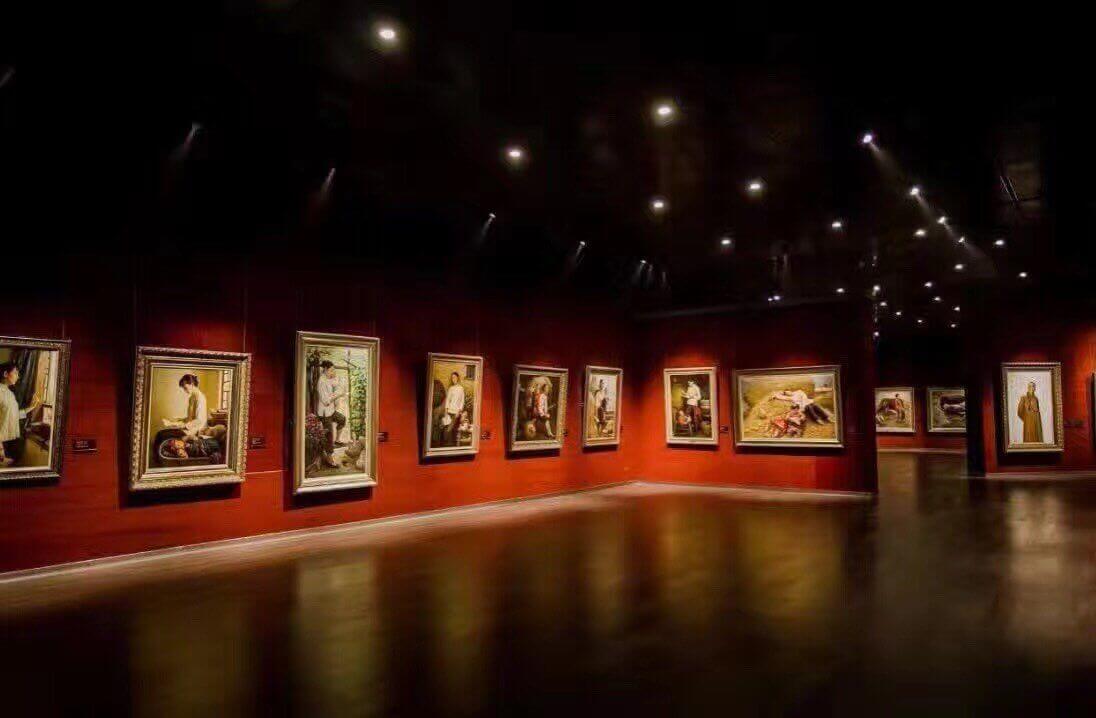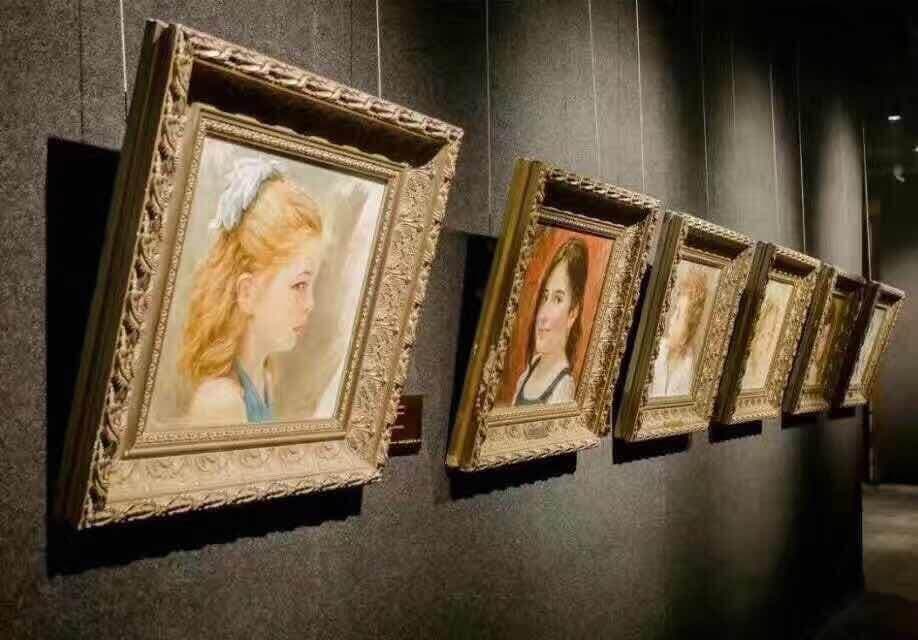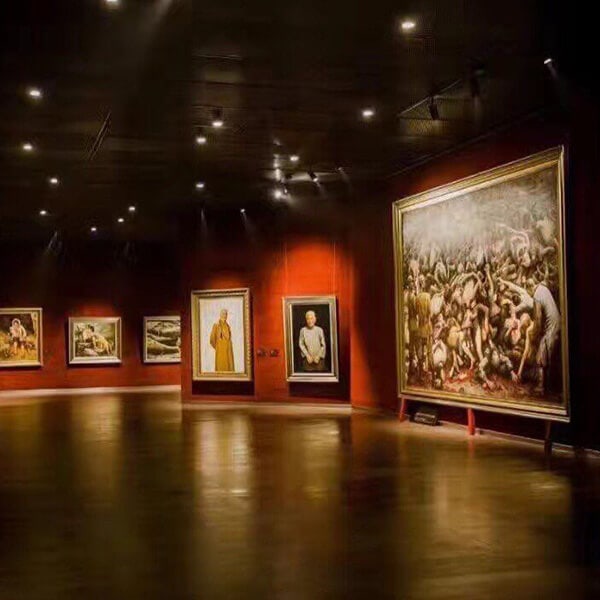Museum lighting three major problems and solutions
The museum is a place for political achievements, collections, exhibitions and research on behalf of nature and human cultural heritage. People visit museums mainly to understand history and accept culture. Therefore, museum lighting should create a light environment suitable for educational visits while preserving the exhibits. However, there are currently three major problems in museum lighting.

1 , The congenital deficiency of museum lighting
The museum display space is the most demanding indoor lighting and the hardest to do.
In recent years, the cultural development of our country has flourished, and new museums have sprung up, but unfortunately, we rarely see projects that are excellent in lighting and worthy of praise.
why?
Excellent projects require the collaboration of lighting design, lighting equipment, lighting commissioning, and are indispensable, but we are all lacking in these three aspects.
Lighting designers play a very important role as lighting consultants for architectural or interior designers. In the outdoor lighting, hotels, store space, etc. have very professional lighting designers, but in the field of museum lighting, talent is very lacking:

01 Museum lighting as a market segment, the capacity is not big.
Although the country has invested heavily in the museum business in recent years, compared with other industries, it is still small in size and has fewer professionals specialized in design.
02 Compared with outdoor lighting, hotels, specialty stores, etc., the museum lighting project has a small amount of engineering and a corresponding design fee.
For example, outdoor lighting projects, lighting is easy to hundreds of millions, lighting design costs millions to 10 million. And a museum lighting project totals several million, rarely tens of millions! The corresponding design cost is hundreds of thousands, so the attraction is not as good as the former.

03 The museum lighting project has a complex space and a large workload.
Compared to the hotel lighting project, most of the areas are rooms, and the room lighting is mostly unified, which makes the workload a lot less, as is the specialty store. However, the lighting in each space of the museum is different, the exhibits are different, there is no copyable, and the workload is much larger.
Therefore, in reality, talents or companies that focus on museum lighting are disproportionate to paying compared to other lighting fields.
Therefore, it is difficult to see designers or design companies that focus on museum lighting. While focusing on outdoor lighting, hotels, and commercial chain spaces abound.
At the moment we only find some designers or design companies that also serve as museum lighting.
The reason is also very simple, if you focus on the museum, they are difficult to survive. In this case, it is difficult for professionals to cultivate. So what do you do when you encounter a museum lighting project?
Looking for companies or designers who have done museum lighting design, due to various factors, there are fewer masterpieces.
However, the market has developed and the demand has come up. What should I do?
Some companies that specialize in museum products will be equipped with lighting designers for the project’s lighting or lighting design.
This kind of situation will be congenitally insufficient, such as product unity, designer’s lack of vision, etc., the output is mostly based on cloth lights. Can only be reluctant. Of course, there are also product supporting companies that set up professional teams, which will be better.
Will the congenital deficiency caused by design be compensated for the day after tomorrow?
2, Museum lighting Market calls for a lighter
In fact, in addition to the congenital deficiency of the museum, there are still bad days.
Museum lighting has a saying “three-point light seven-point adjustment”, which over-emphasizes the role of lighting debugging, but also illustrates the importance of lighting debugging from the side.
The exhibition space of the museum, the size of the exhibits are different, and in the design stage. there are few detailed plans for the exhibits, and the lighting can only be roughly arranged. Then, to achieve precise dimming, the meticulous work of the lighter can only be done.
Moreover, the museum has a lot of exhibitions, and every time the lights have to be changed. the exhibition often lacks professional lighting design and technical guidance. At this time, it can only rely on the lighter!
However, the museum lighting dimmer, there is no such occupation at present! No career, what talent?
At present, this work has been done by electricians, maintenance workers, manufacturers or construction technicians, lighting designers, etc. Each type of talent lacks professional training, and personal experience is too dependent. In this way, the effect of the adjustment is also uneven.
Moreover, because the lighting controllers do not have professional qualifications, everyone generally disagrees with the professionalism of their work. Therefore, during the lighting debugging, interior designers, experts, and leaders will pay attention to them. The opinions on lighting are especially high. The corresponding status, everyone does not agree with it, I hope that the lights will bring out what they want. The result is that the lighter is busy before, and the final result is not satisfactory!
Insufficient congenital and acquired defects have overwhelmed museum lighting, and the problem of conception has made the museum lighting even worse!
01 No matter how wonderful a museum is, if the lighting not good, it won’t show good results.
But in fact, everyone is willing to spend a lot of money in other areas, reluctant to spend more on lighting. Some projects are underfunded, and each sub-item will be misappropriated during the implementation process. At the end of the lighting, when the results were done, I found that the funds had been used up! No way, you can only do it.
02 Museum lighting micro-map
Nowadays, many museums have paid more attention to lighting. The Ministry of Finance’s General Office issued the document on the “Preparation of Expenditure Budget and Expenditure Standards for Display and Exhibition Projects” on January 5, 2017. The budget is as follows:
For lighting, multimedia specifies the relevant costs, which fundamentally emphasizes the importance of lighting.
There is also a common misunderstanding. Everyone thinks that the investment in museum lighting is the cost of lighting equipment. I don’t think about lighting design, lighting debugging… As a result, we have seen too many examples of failure, investing huge sums of money and putting on a bunch of big-name equipment. The final rendering is very poor!
Museum lighting is getting more and more attention, the investment is bigger, too much emphasis on equipment but neglecting design and debugging, resulting in waste of resources and difficulty in producing effects. This phenomenon will become more and more serious and needs attention!
03 “Poetry and Distance” of Museum Lighting
Lighting designer, lighting director –
One is a market that is eager for
One side is a talented person.
How to break through the museum lighting?
Based on years of experience, the author puts forward some suggestions for reference:
1. The museum or construction company is equipped with a professional light adjuster.
Whether it is a permanent exhibition or a temporary exhibition, lighting is a common work of the museum. Therefore, the configuration of professional lighting controllers is an urgent problem to be solved.
At present, most of these work is done by electricians in the museum. Some electricians can also bring out good results based on their many years of experience and the advice of experts or designers. However, if the project is more complicated, designers, experts, leaders and other opinions. Many, the electrician is very difficult to debug.
The feasible way is to let the electrician do some professional training, master the lighting knowledge, supplemented by the actual project experience, and become a qualified lighting adjuster, these problems can be solved.
Specifically, those knowledge includes:
01, The reading of the interior design drawing and the lighting diagram is flexible, and the lighting must be familiar with the relevant drawings and can be flexibly used according to the changes of the scene.
02, Optical accessories application. If the light adjuster masters the application of the optical accessory, it can flexibly change the spot size to the shape according to the display.
03, Knowledge of lighting products, familiar with the product parameters and characteristics of various manufacturers, select suitable lamps in different scenarios.
Lighting art, it is necessary to understand a little art, at least to understand the designer’s intention, expressed by the light.
And these trainings should be irregular, so that you can grasp the latest technology and share the interoperability.
2. The museum exhibition design company or construction company set up a lighting design group and hired a professional lighting designer as a lighting consultant.
Exhibition design company responsible for the overall design of the museum interior. For lighting, it is best to have a professional team of designers to achieve the overall effect. The final pass of any museum project, the overall performance is the lighting, this node needs to pay enough attention and grasp.
There is a profession of lighting designers in China. The exhibition company is equipped with professional lighting designers to focus on the field of museum lighting. For project design and later effects presentation, it will be strongly guaranteed!
At present, this part of the work is more outsourced, even if you want to outsource yourself, if you don’t understand it, you can directly give it to the outside, the effect is difficult to guarantee.
In addition, the lighting design is based on the interior design. The lighting designer needs to fully understand the intent of the interior designer and the architect. These work are more meticulous, and if outsourced, these very detailed work is difficult to achieve, if you Without the talents in lighting design, it is difficult to make the desired effect.
3. Third-party companies for lighting equipment and performance evaluation
For lighting equipment, we are still a local-style approach, choose the best or the most expensive. In fact, different situations should be treated differently:
01 The museum lighting require the professional lighting supplier to provide high quality LED museum lights, such as LED Track Light, surface mount LED down lights, and so on.
The advantages of various manufacturers are different, some are stronger than key lighting, and a little longer than wall washing. We must consider and choose the advantages.
Shenzhen GS LIGHT is a very professional lighting company can provide all kinds of LED lights for museum lighting.
02 The museum’s mouth-to-mouth or demonstration effect is relatively strong, so it is easy to ignore some excellent, small but characteristic products, but they can all meet the requirements, and may have better performance and more affordable prices.
03 In this case, an authoritative third-party agency can provide advice to the owner or the library if it can provide professional advice and independent reporting. This saves costs and ensures results. At present, there is only one Safety and environmental certification of lamps, and there are almost no authoritative evaluation agencies on the performance of effect lamps.
04 Of course, some organizations have begun to try, such as Beijing Qingkong Habitat Optoelectronics Research Institute, in the 2017 annual cultural industry standardization research project “Art Gallery Lighting Quality Assessment” hosted by Ai Jing, began to independently evaluate the products of some museum professional lighting companies. It is very beneficial for the museum to fully understand the market conditions and product features.
When the lighting design, lighting equipment, and lighting debugging problems are effectively solved, the status quo will be fundamentally improved, and the “poetry and distance” of museum lighting will be truly ushered in.
